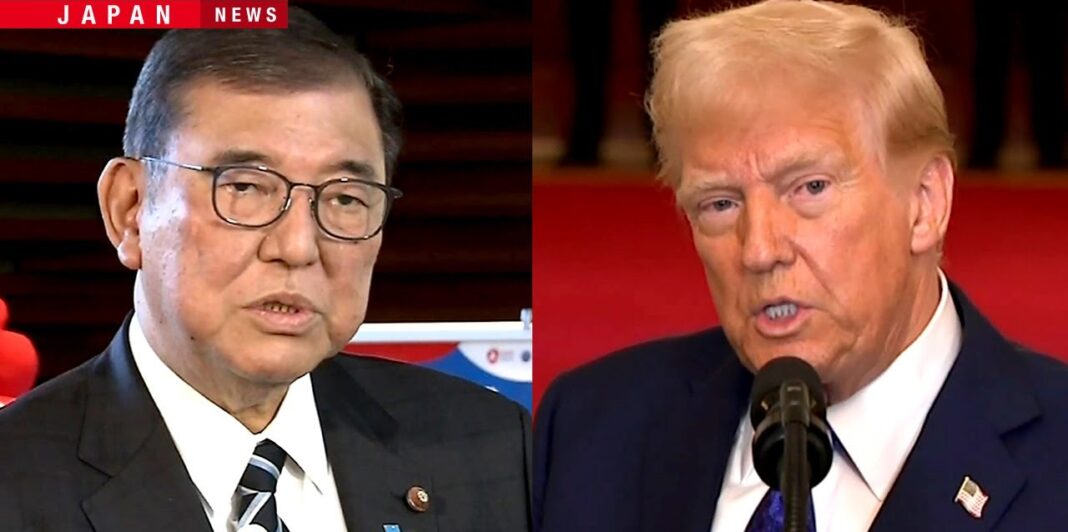The recent US-Japan summit shed light on the evolving diplomatic and economic ties between the two nations. With Japan aiming to solidify its status as a strong and reliable ally, the meeting was crucial in reaffirming key alliances, addressing trade balances, and discussing security concerns in the Indo-Pacific. The implications of this summit stretch beyond immediate political relations, influencing economic strategies, regional stability, and future geopolitical shifts.
Key Discussions and Takeaways
1. Strengthening the US-Japan Alliance
One of the primary objectives for Japan was to maintain the momentum established under the Biden administration. The country aimed to reinforce its position as a key player in regional security while ensuring continued US support under potential leadership changes in Washington.
A critical reassurance came in the form of discussions around Article 5 of the US-Japan Security Treaty, affirming US protection over the Senkaku Islands. This was a significant diplomatic win for Japan as tensions in the Indo-Pacific, particularly concerning China and Taiwan, remain high.
2. The Trade Balance and Potential Tariff Concerns
Economic discussions revolved around Japan’s trade surplus with the US and the broader implications of American trade policies under a new administration. Japan, historically considered a stable and strategic economic partner, sought to mitigate risks associated with the US’s shifting trade policies.
While Japan has largely been excluded from recent US tariff threats, its significant trade surplus could make it a target in the future. The issue of trade deficits remains a contentious topic, and the summit served as an early-stage discussion platform for what may later develop into more formal trade negotiations.
3. Nippon Steel’s US Steel Acquisition: A Sticking Point?
One of the major economic issues looming over the meeting was the blocked acquisition of US Steel by Japan’s Nippon Steel. The deal had been halted under the Biden administration, raising concerns about Japan’s economic footprint in the US and the potential for protectionist policies under a Trump-led administration.
The Japanese delegation seemed keen to avoid bringing up this issue, instead pivoting discussions toward investments in AI and energy. This strategic move indicates Japan’s intent to diversify its economic engagement with the US while steering clear of politically charged economic conflicts.
4. Defense and Military Cooperation
Beyond trade and economic relations, security cooperation remains a cornerstone of the US-Japan alliance. While no detailed military agreements were expected from this summit, the meeting helped set the tone for future collaborations.
With upcoming negotiations over the Special Measures Agreement (SMA) regarding the cost-sharing of US military presence in Japan, potential financial contributions from Japan may become a more pressing issue. The US has historically pushed for higher contributions from its allies, and Japan may have to navigate complex diplomatic waters to balance security obligations with economic sustainability.
5. China, Taiwan, and North Korea: Strategic Alignment
The summit touched upon shared concerns over China’s regional ambitions, the stability of the Taiwan Strait, and North Korea’s nuclear threats. While no concrete agreements were made, the discussions reinforced Japan’s commitment to maintaining regional stability alongside the US.
Future summits, particularly the 2+2 meetings between defense and foreign ministers, will likely delve deeper into military and strategic cooperation. The foundation laid during this meeting sets the stage for more substantial security agreements in the coming years.
Future Implications and Strategic Path Forward
As Japan and the US continue to navigate shifting political and economic landscapes, several key developments could shape the future of their alliance:
- Economic Strategy: Japan must proactively invest in areas that align with US interests, such as AI, clean energy, and semiconductor technology, to strengthen economic ties and mitigate trade surplus concerns.
- Security Contributions: Japan will likely face increased pressure to contribute more to regional defense efforts, particularly in light of evolving US military strategies.
- Trade and Investment: The outcome of future trade negotiations could significantly impact Japan’s economic policies. Diversifying trade relationships beyond the US may be a prudent strategy.
- Geopolitical Stability: Given the tensions with China and North Korea, Japan must continue fostering diplomatic ties with other regional allies while maintaining a balanced approach to US-China relations.
Conclusion
The US-Japan summit served as a crucial platform for reaffirming alliances, addressing economic concerns, and setting the stage for future negotiations. While immediate agreements were limited, the discussions indicate that both nations recognize the need for a steady and strategic approach to evolving global dynamics. As trade policies shift and security demands intensify, Japan must remain agile in balancing economic growth with geopolitical stability.
Disclaimer
This article is based on an analysis of publicly available discussions and expert opinions. The interpretations provided reflect general trends and potential implications but should not be considered definitive policy assessments. Readers are encouraged to follow official government statements and reports for precise updates on US-Japan relations.
Dr. Noah Alvarado is a global economist specializing in international trade policies and macroeconomic analysis. His research has been published in prominent journals.




